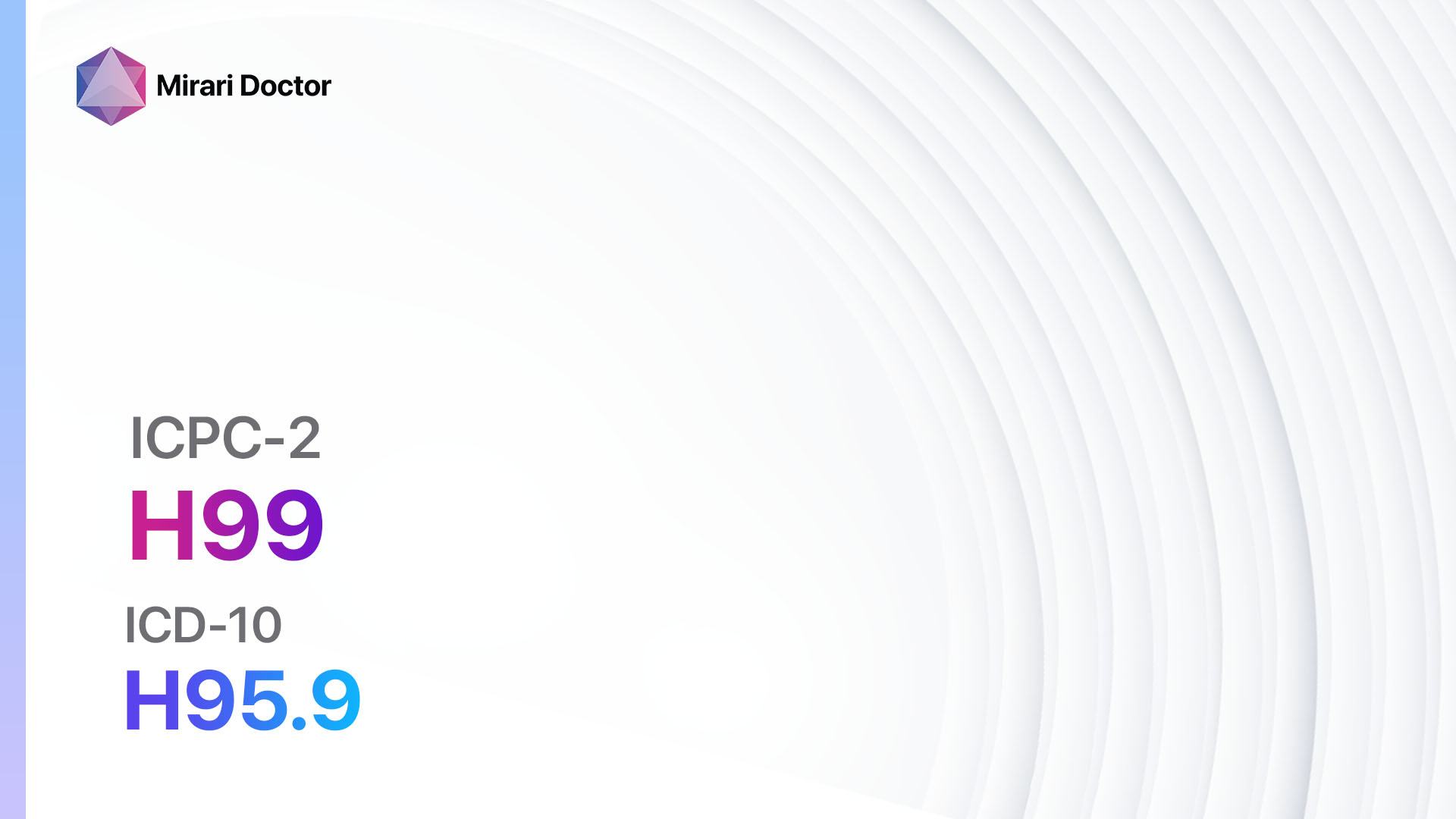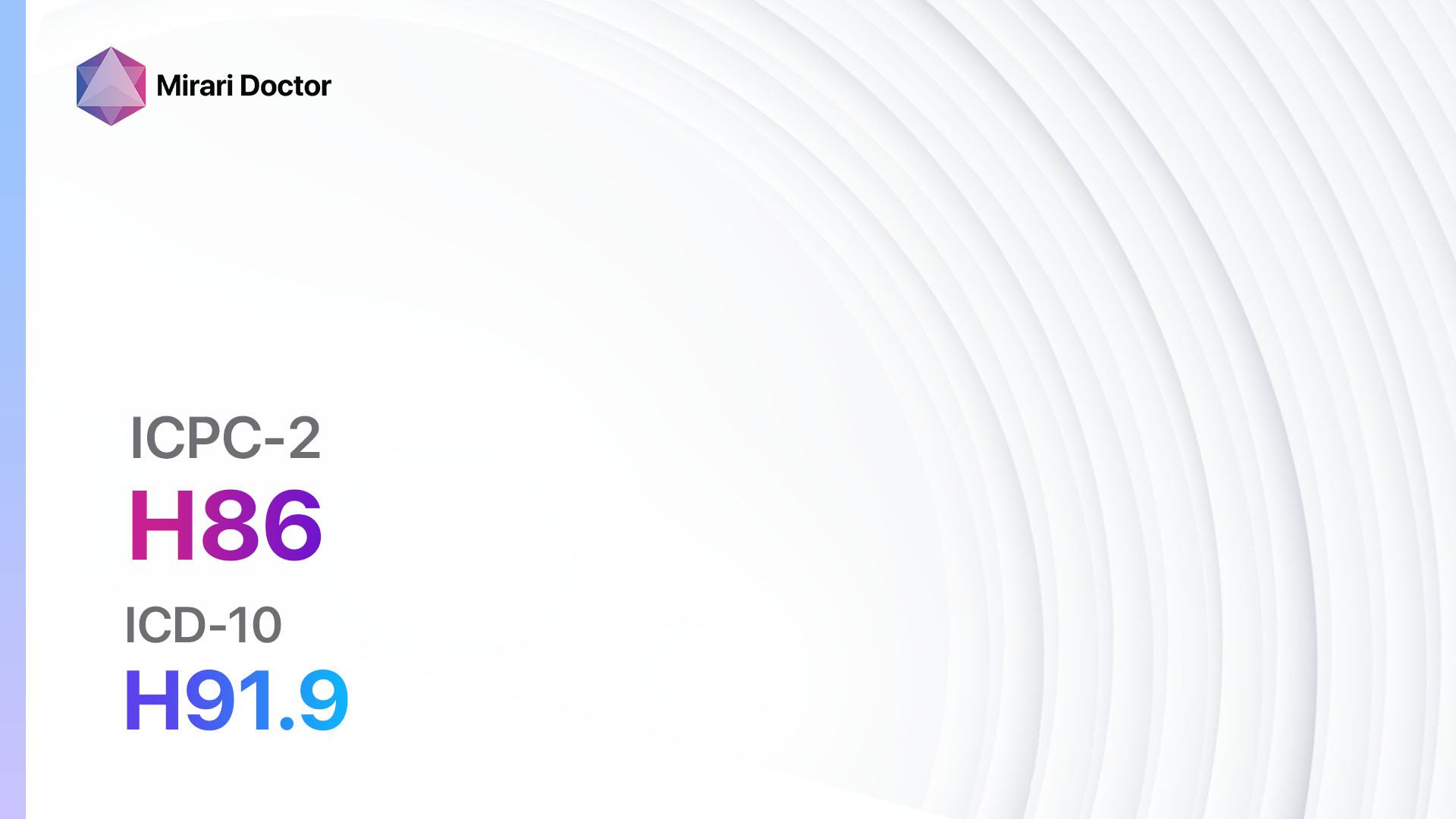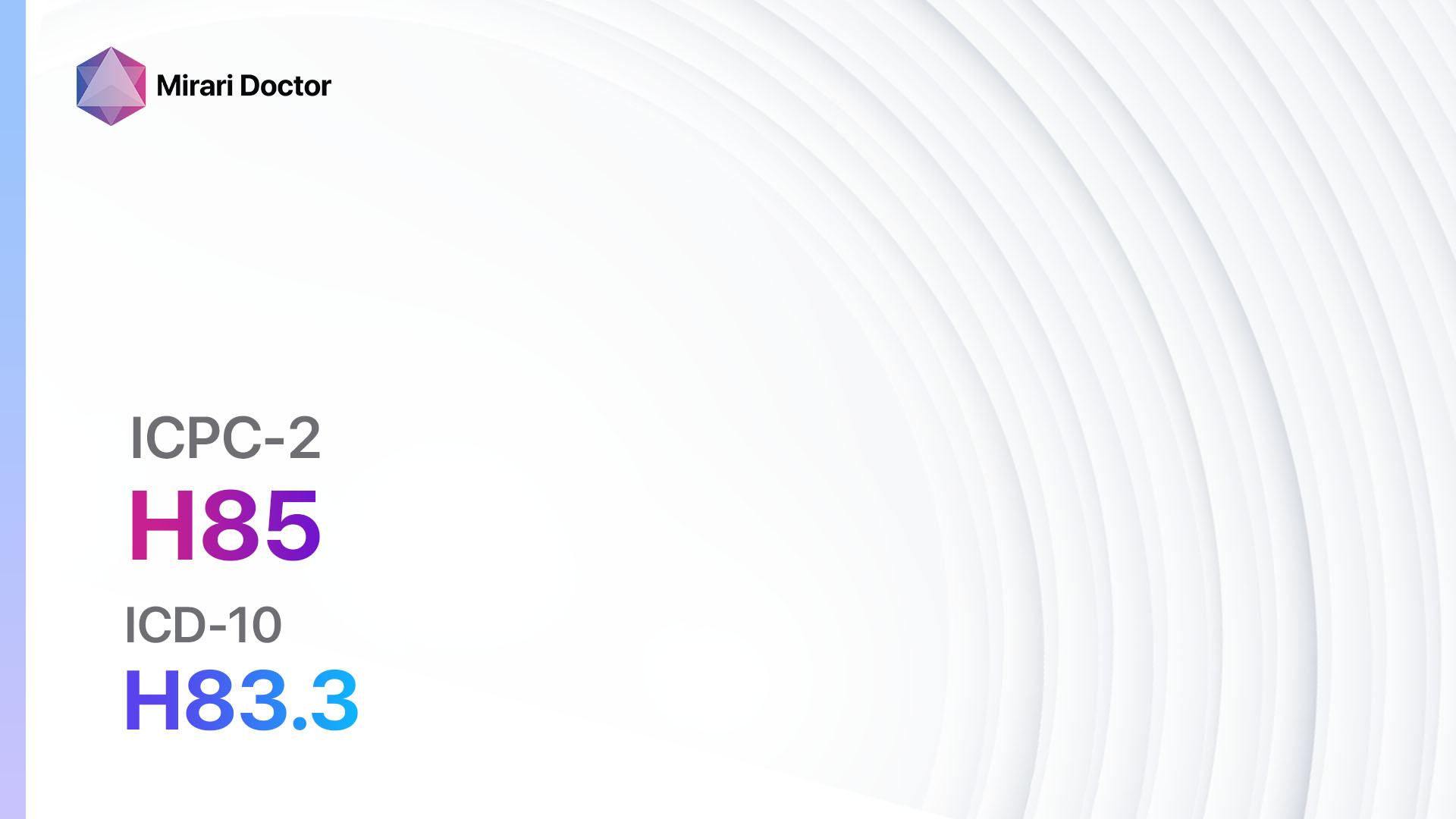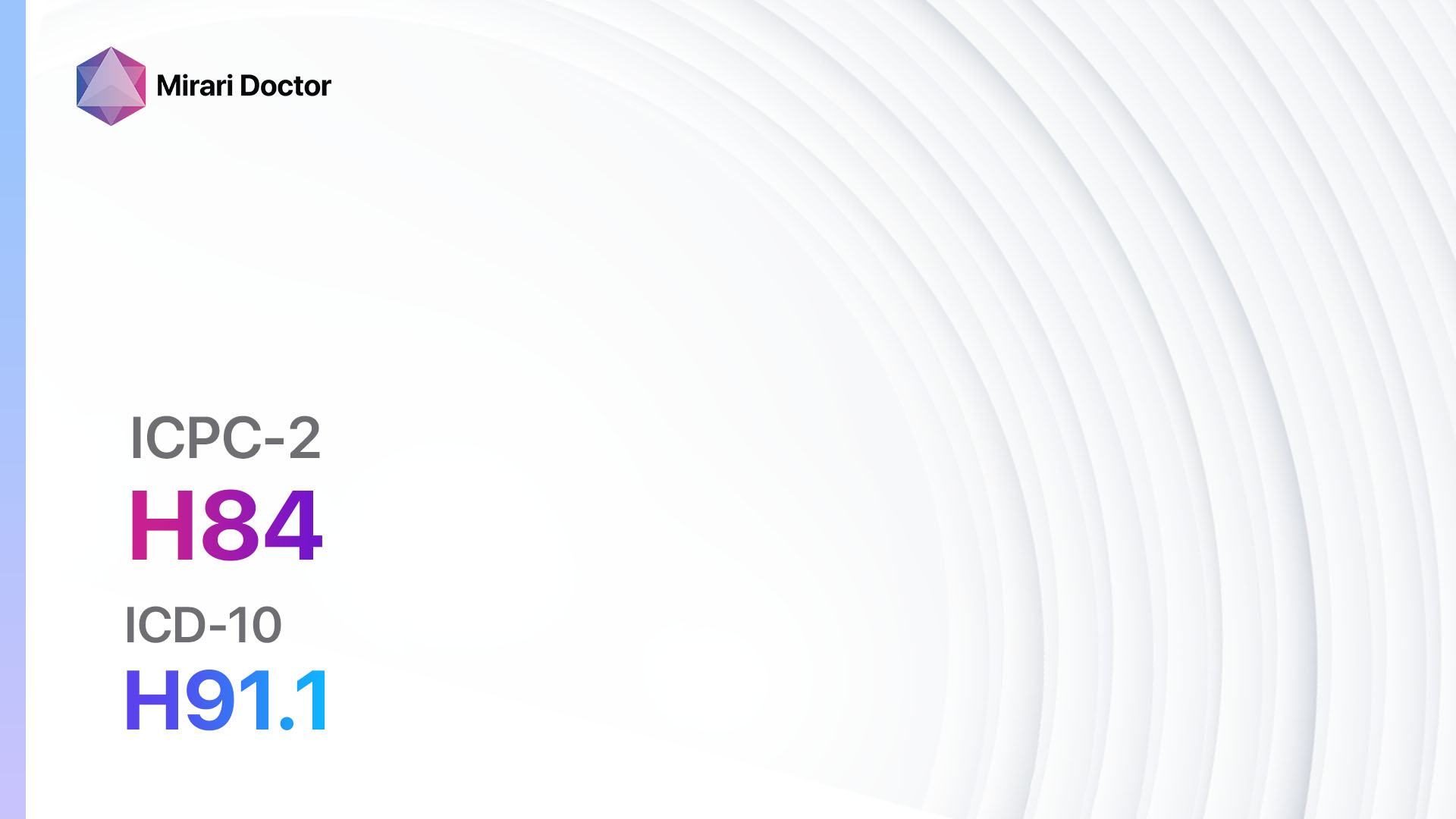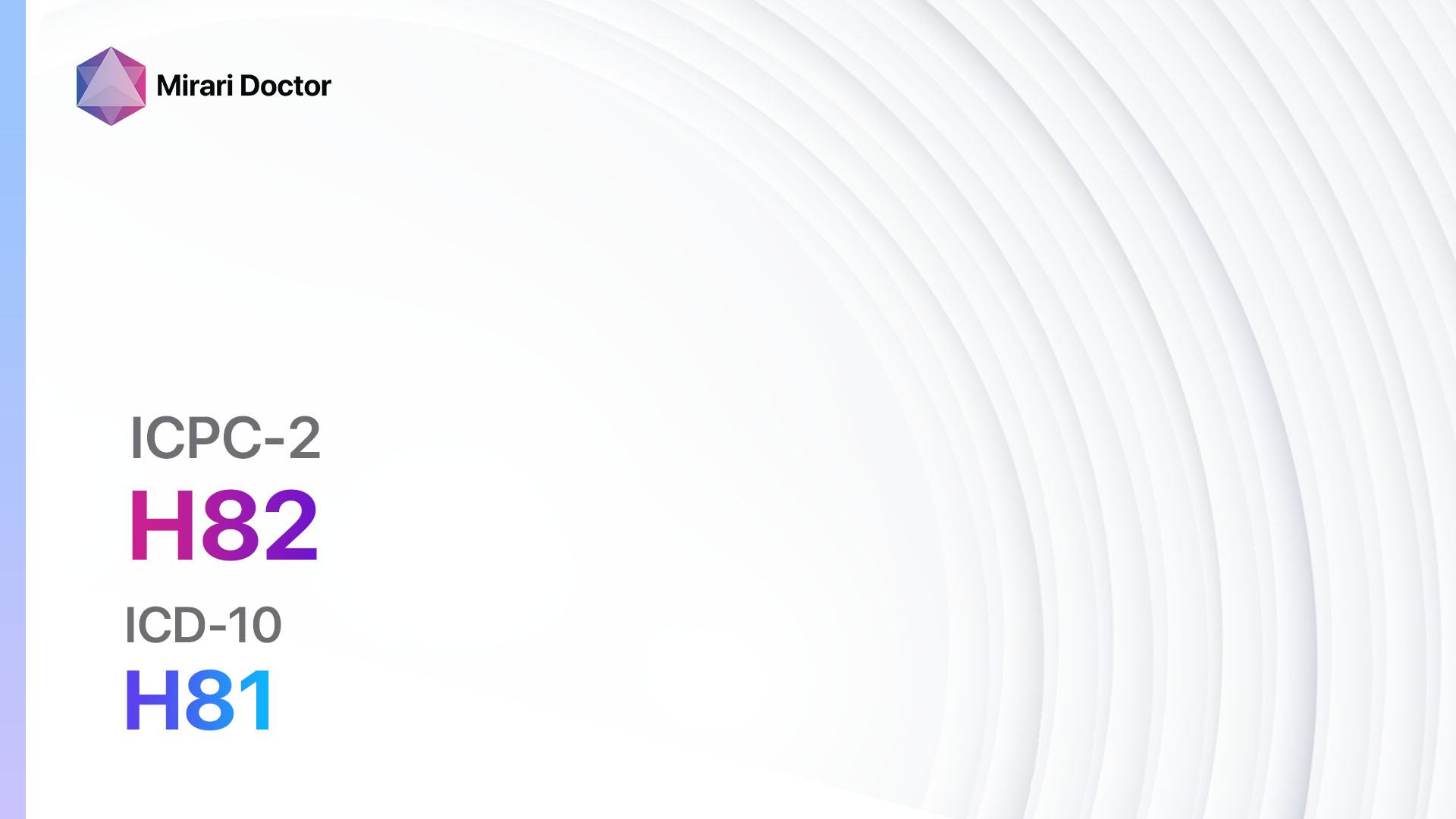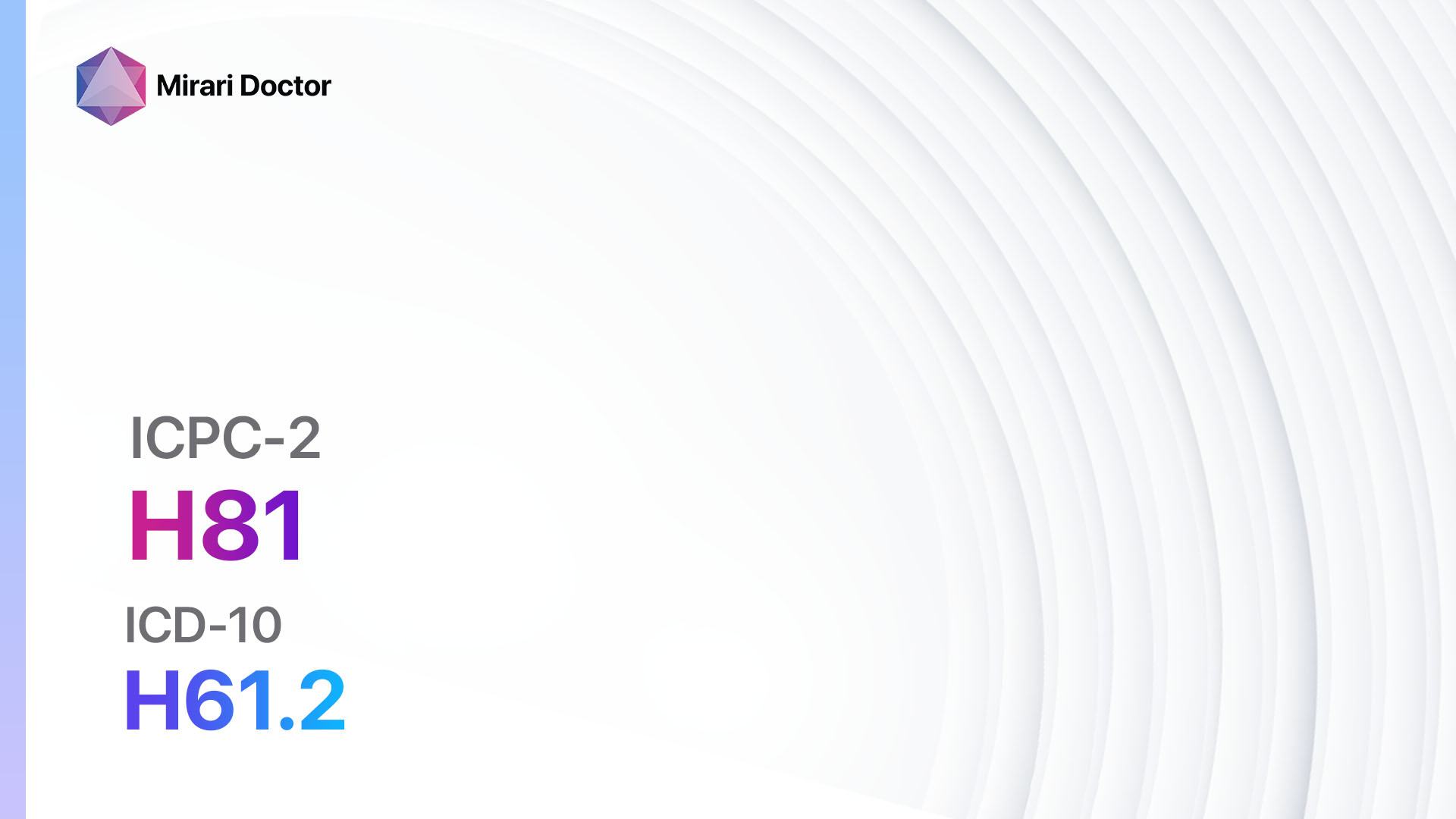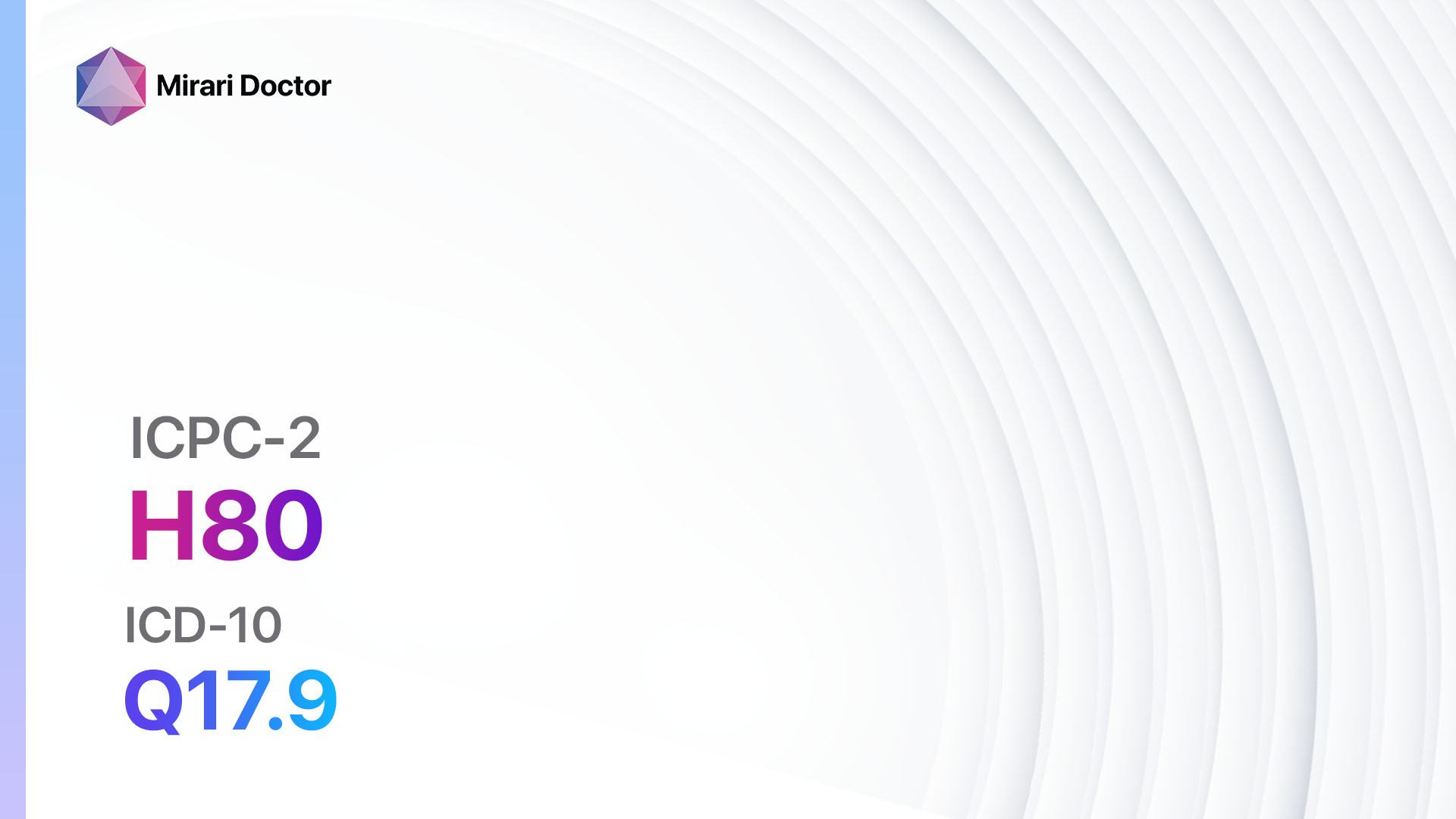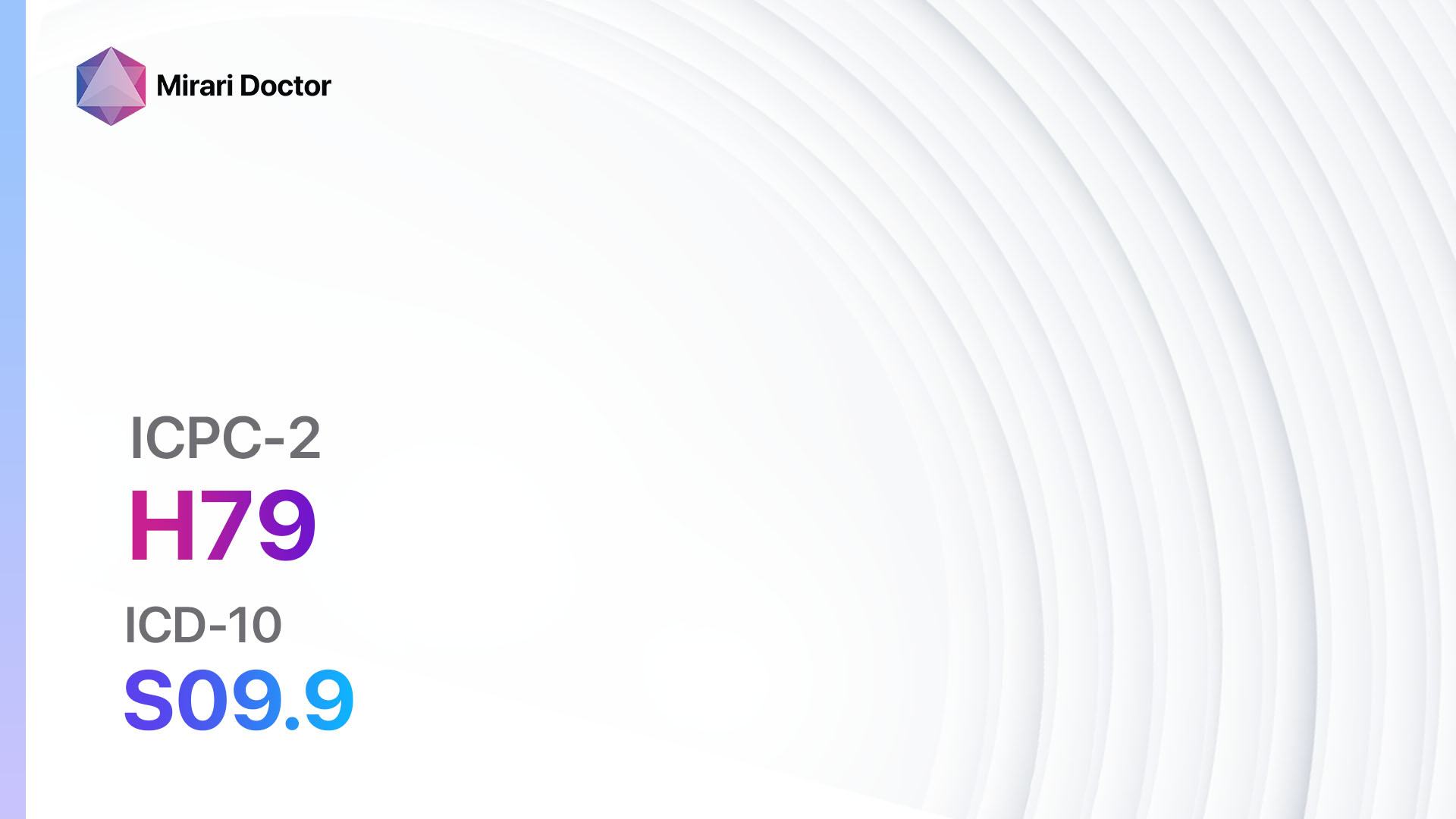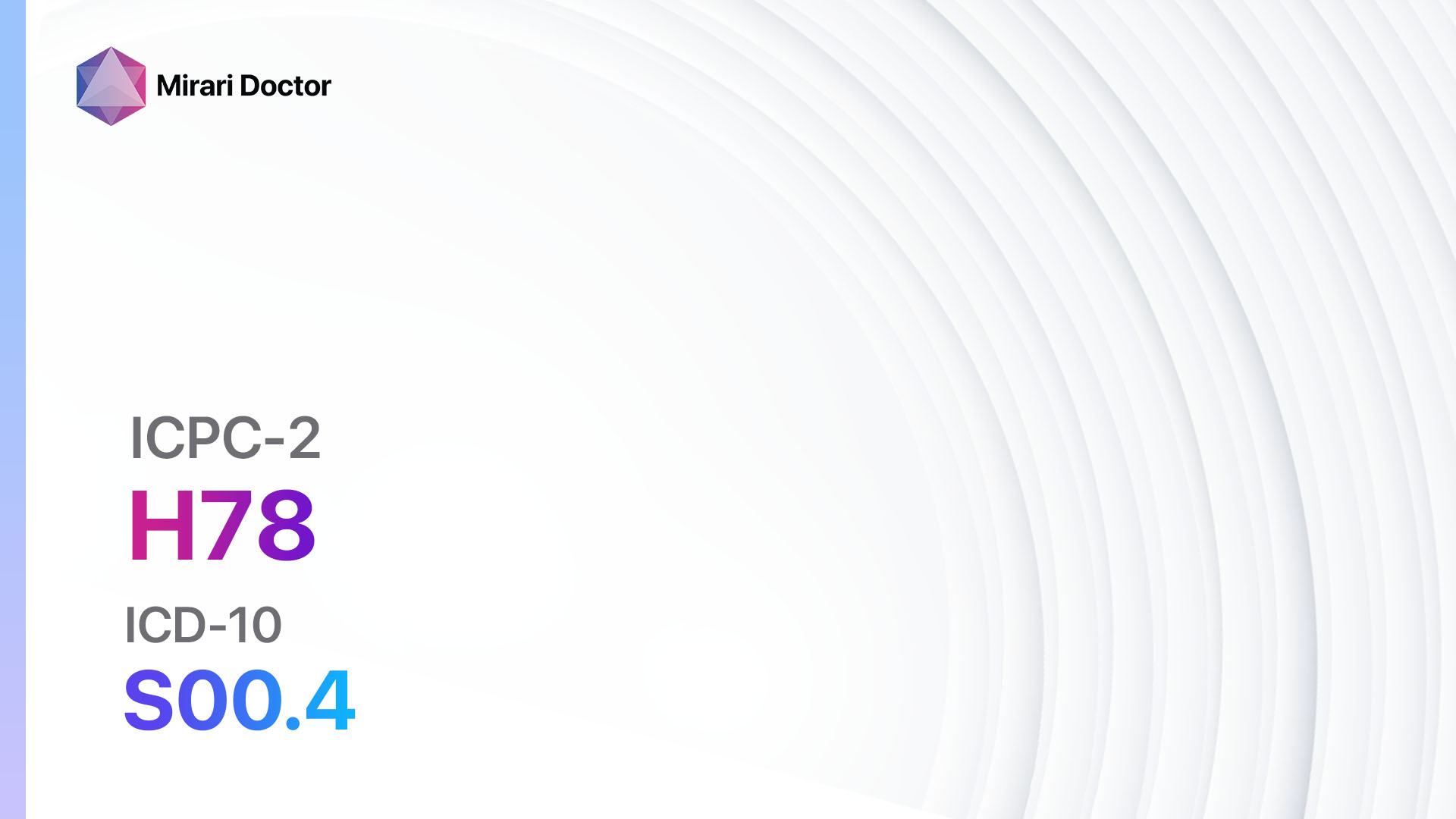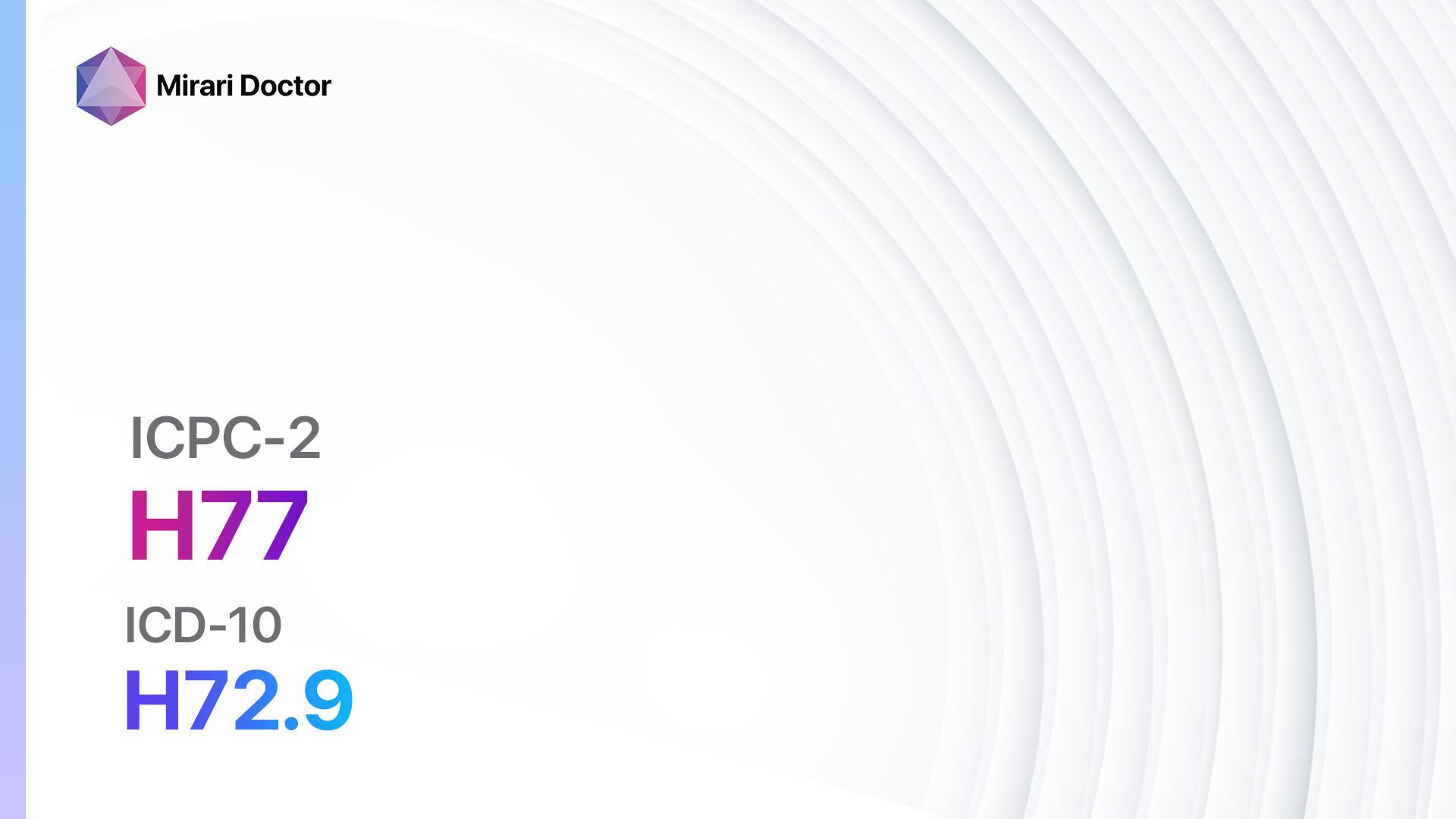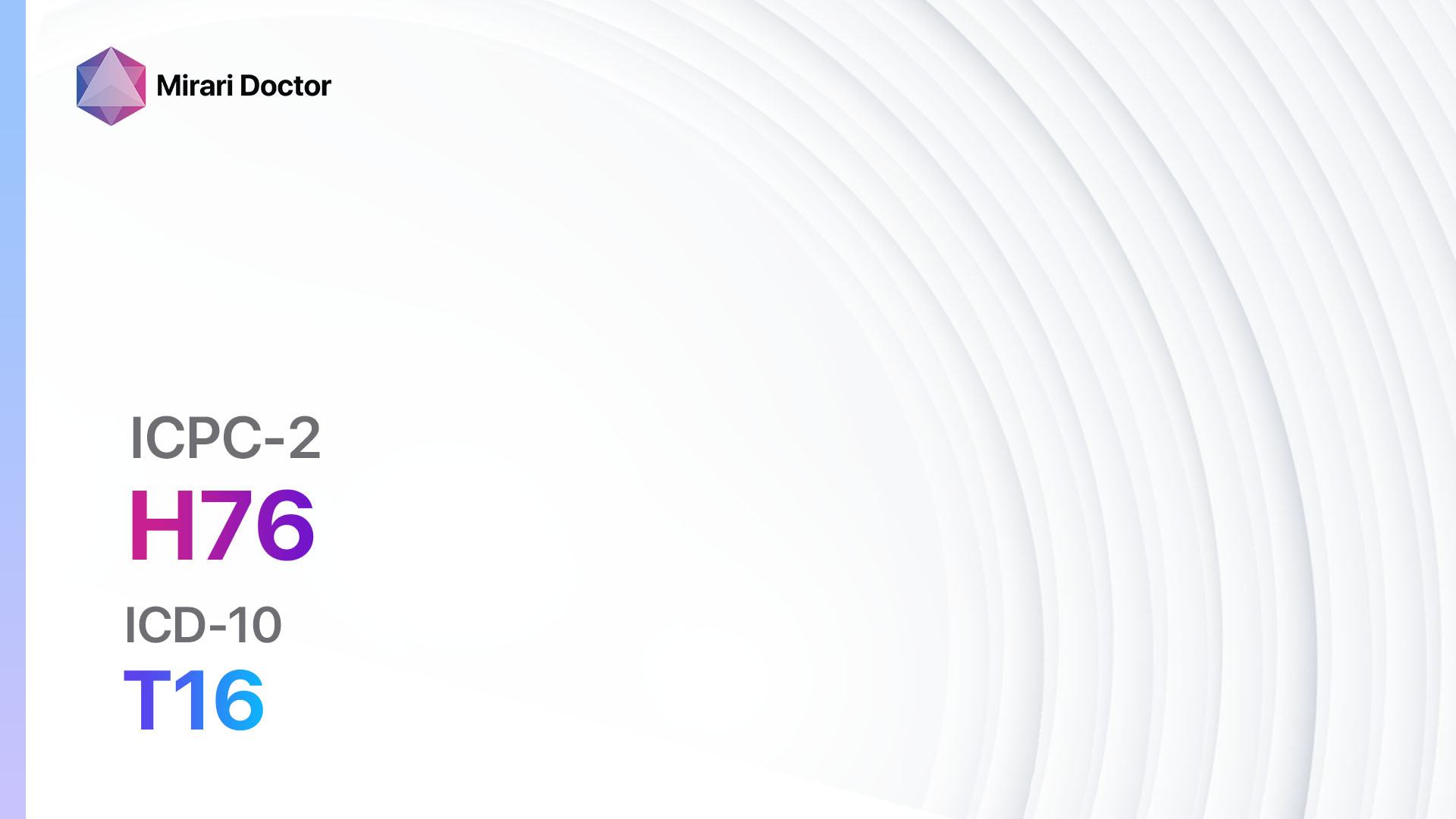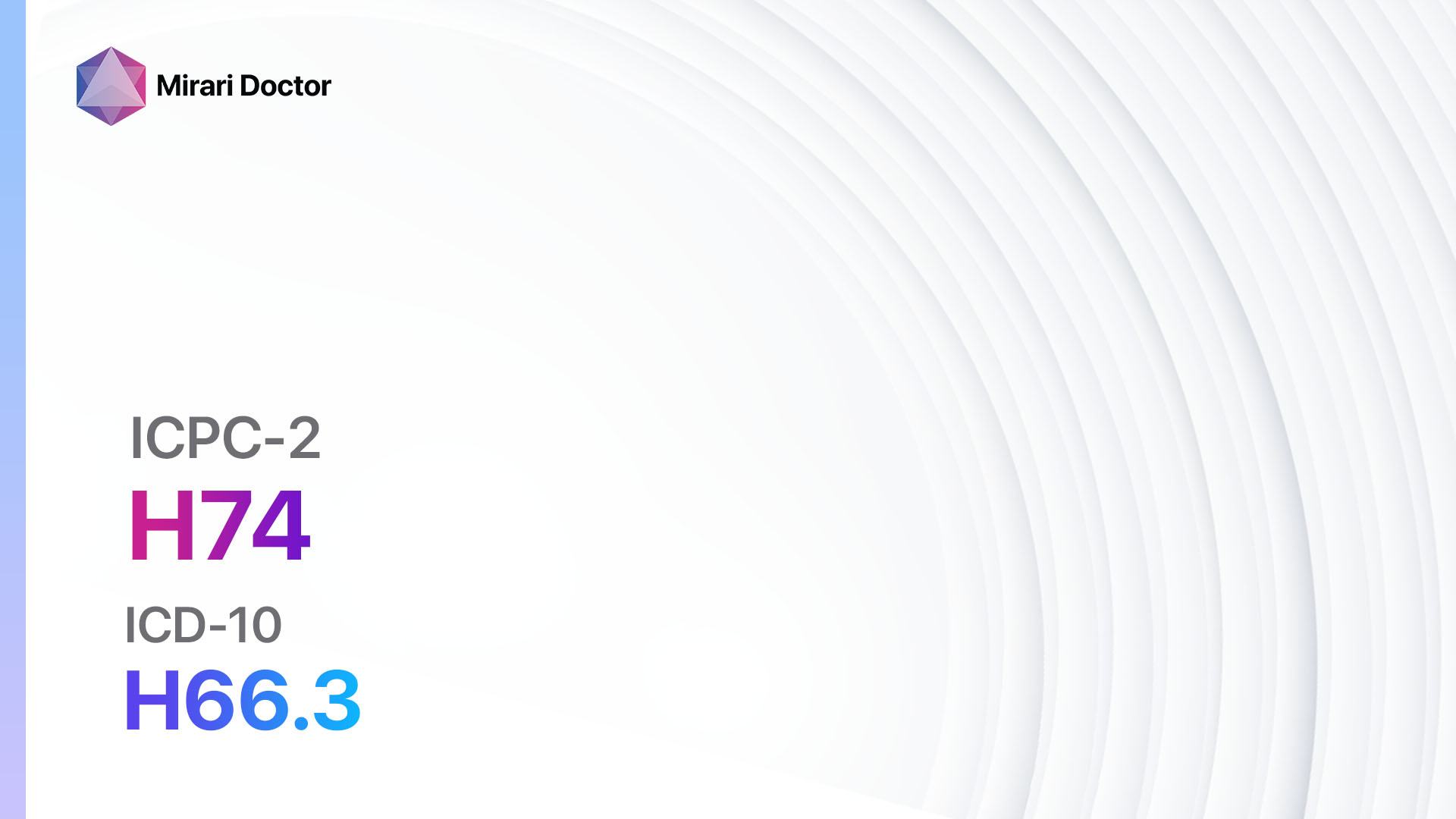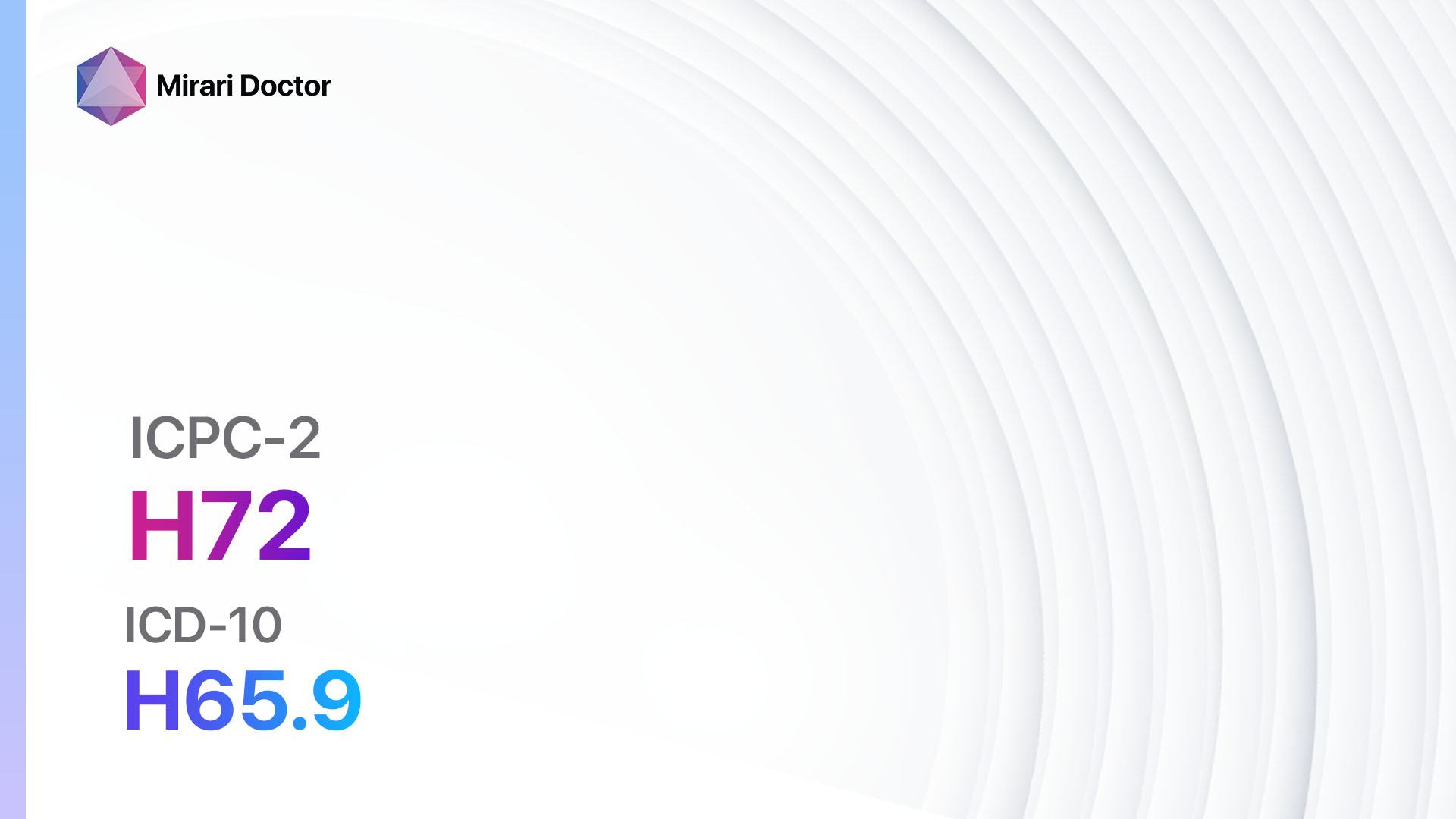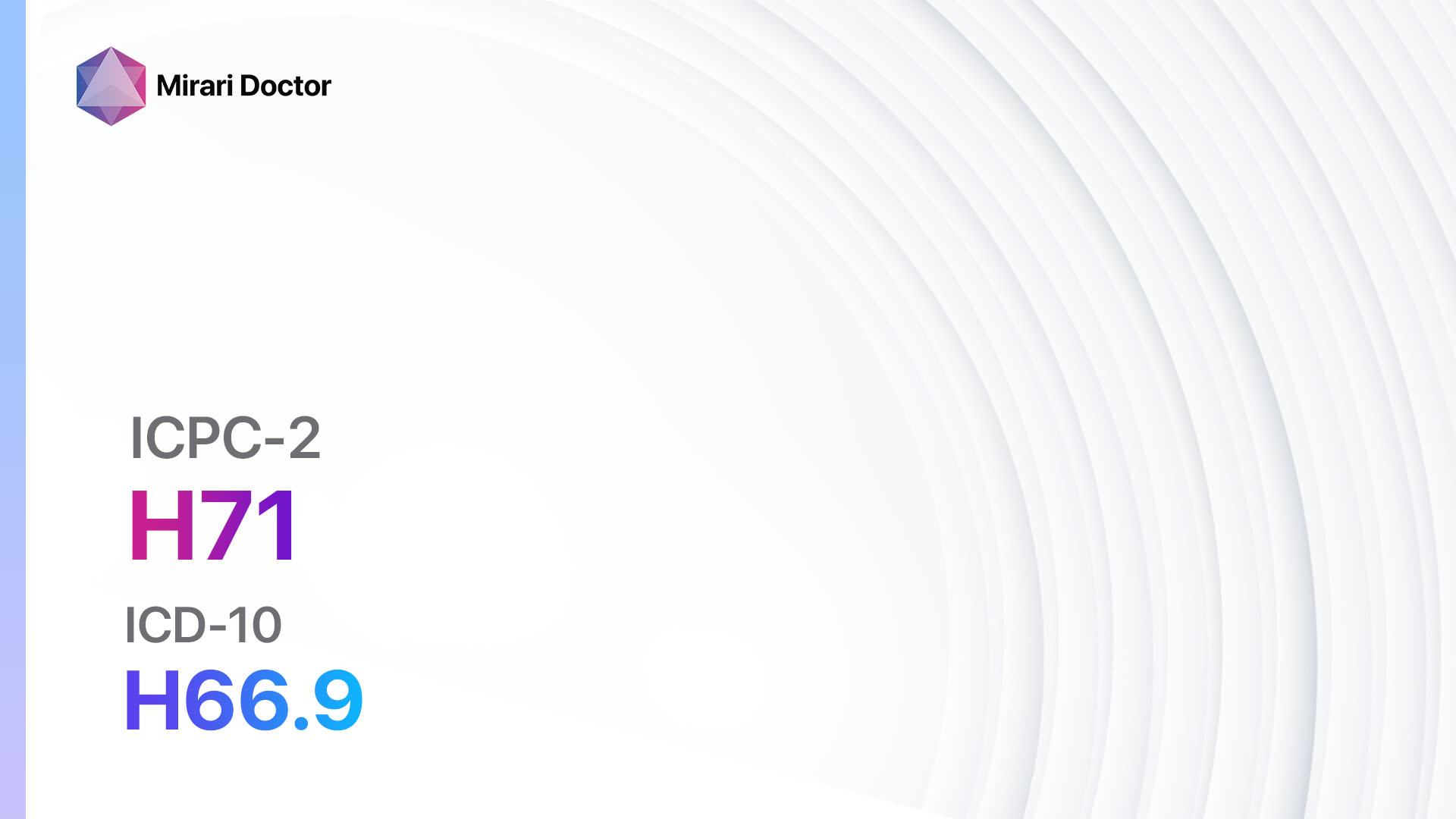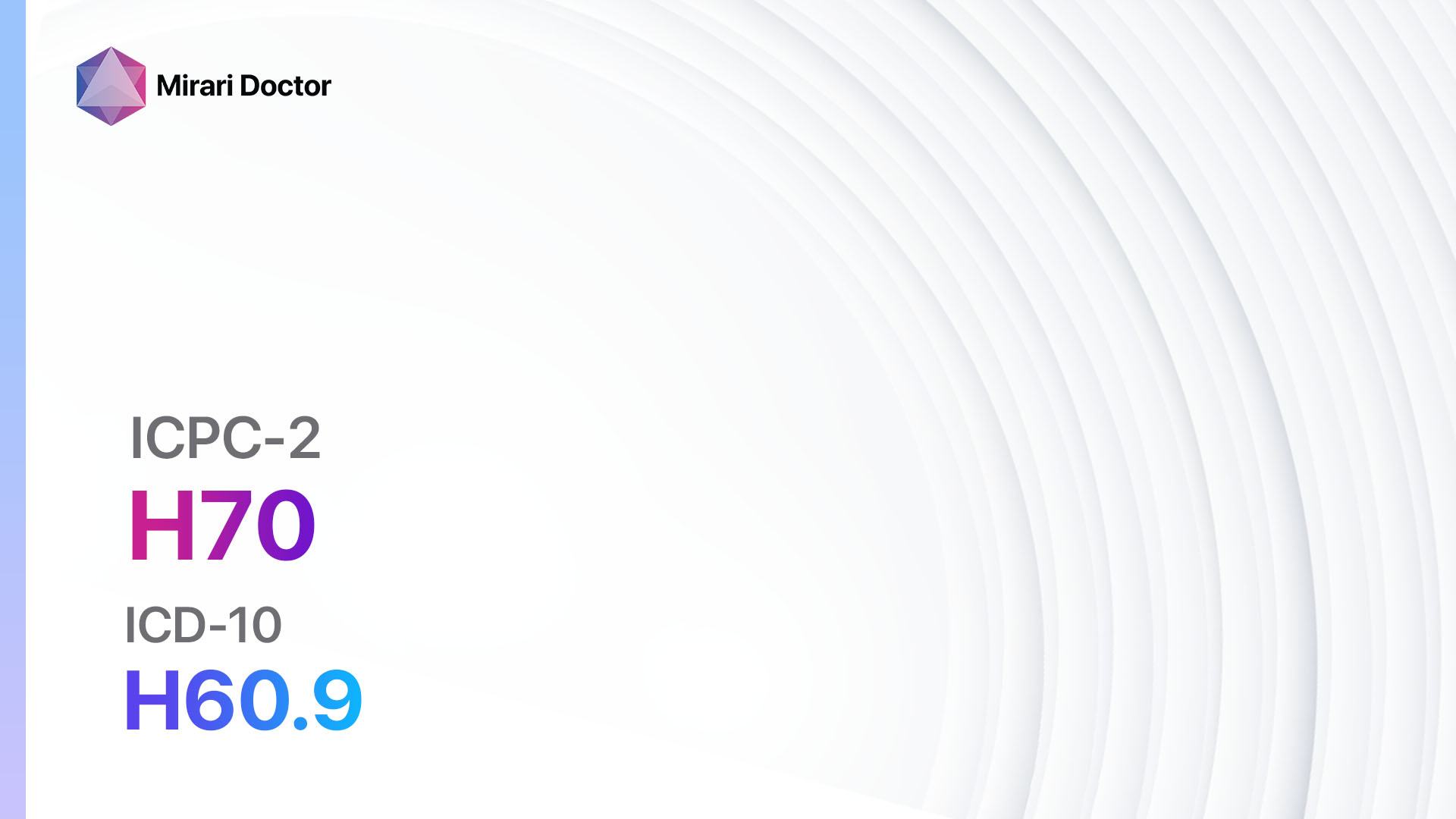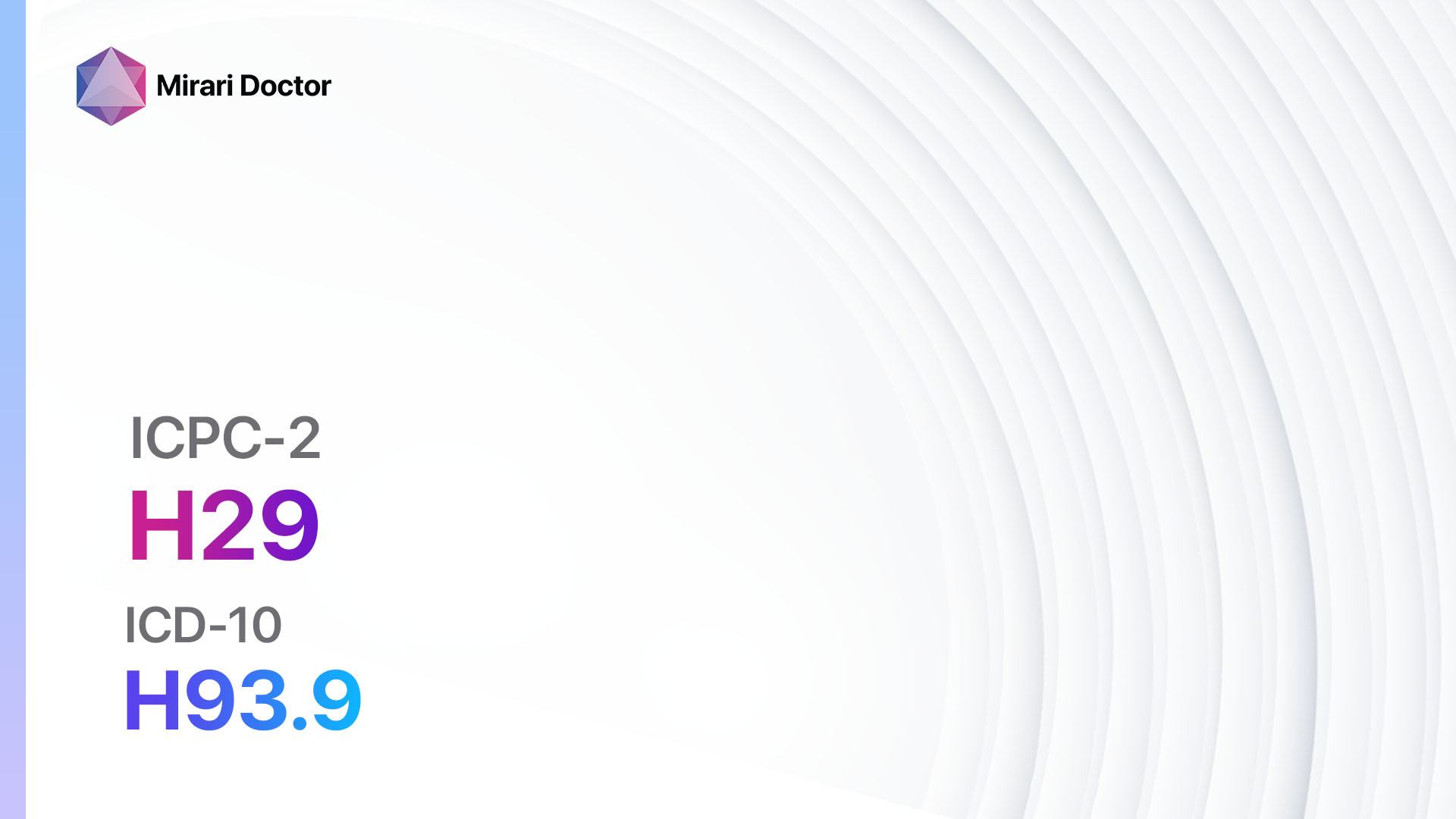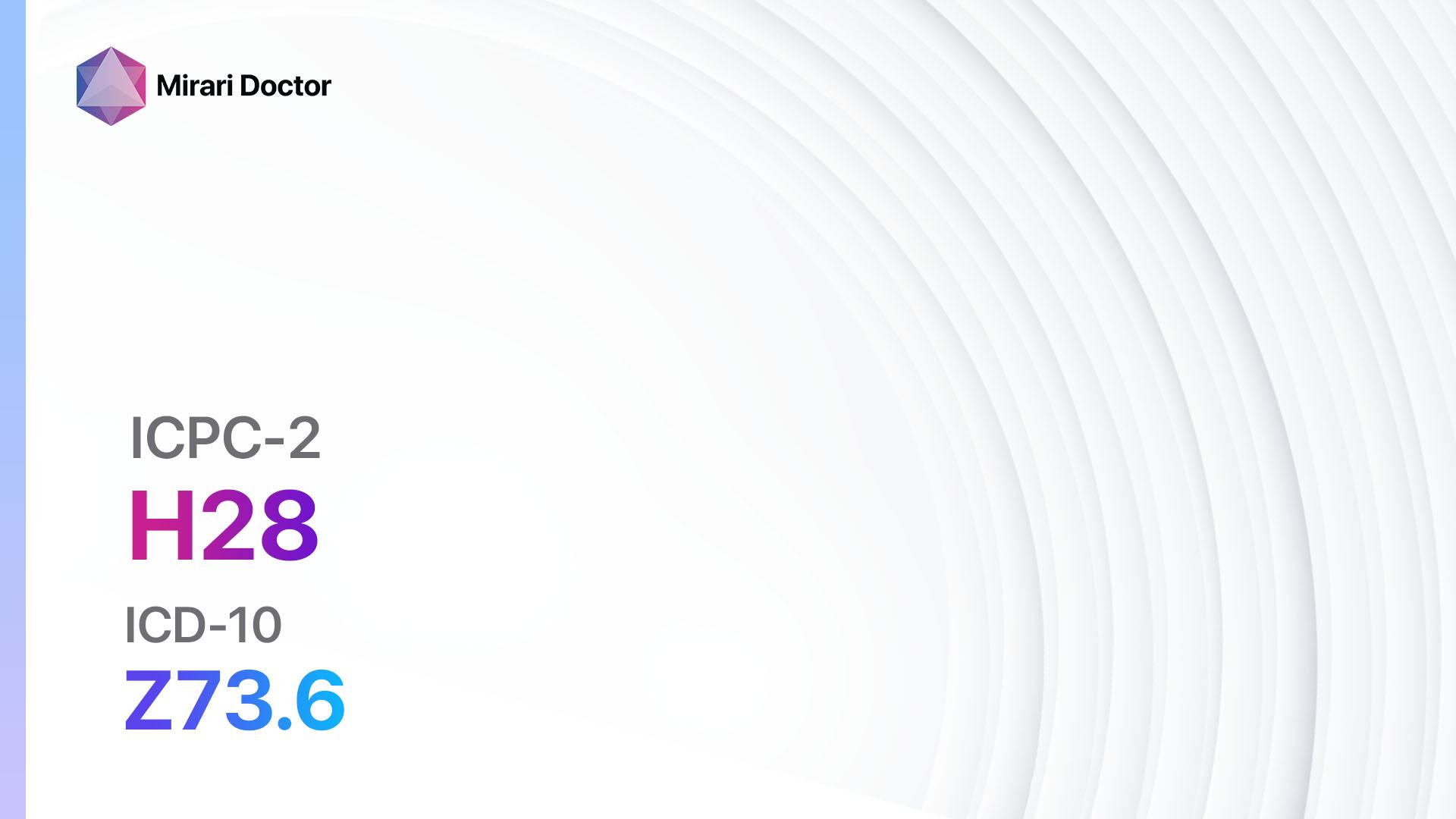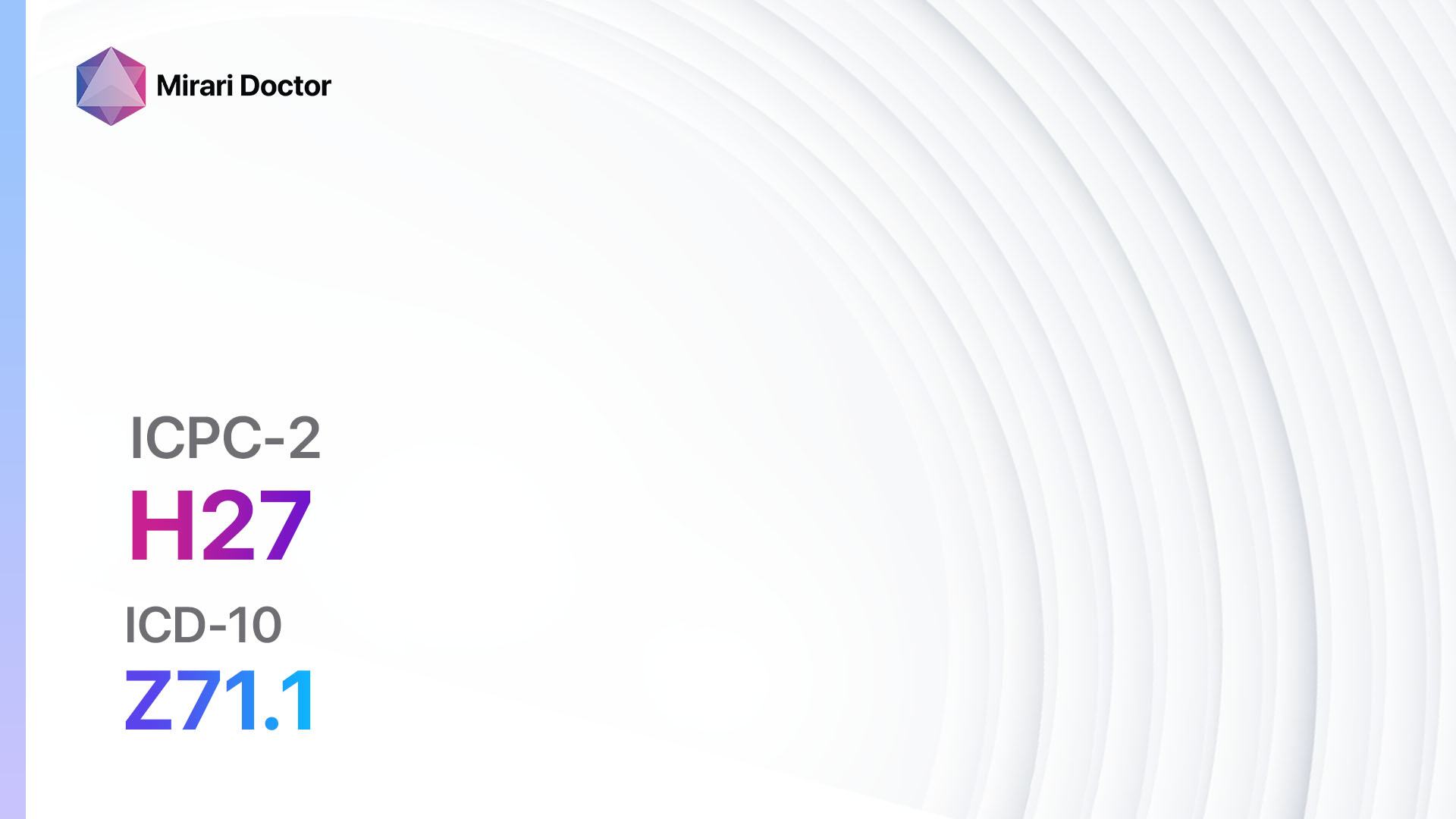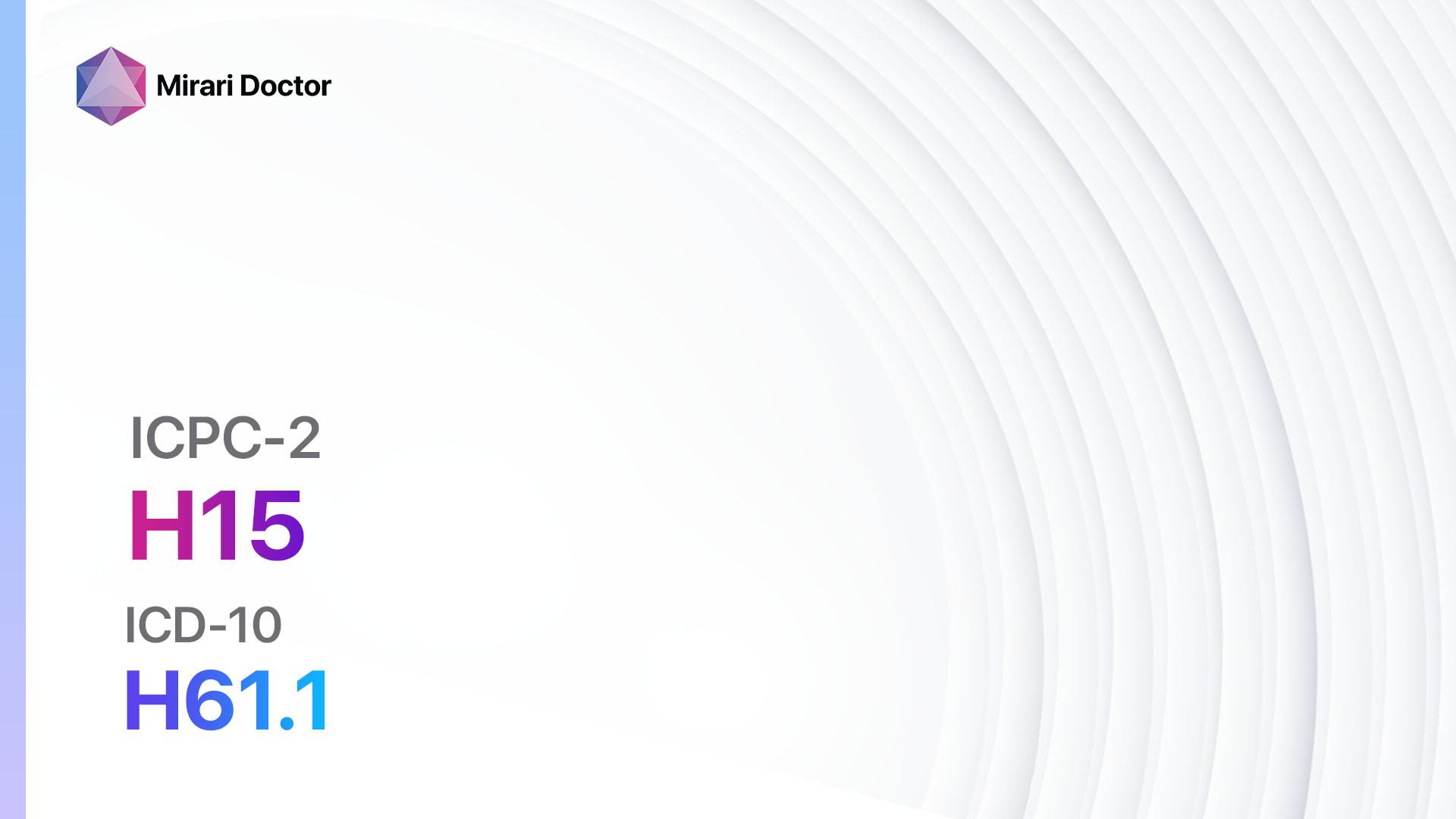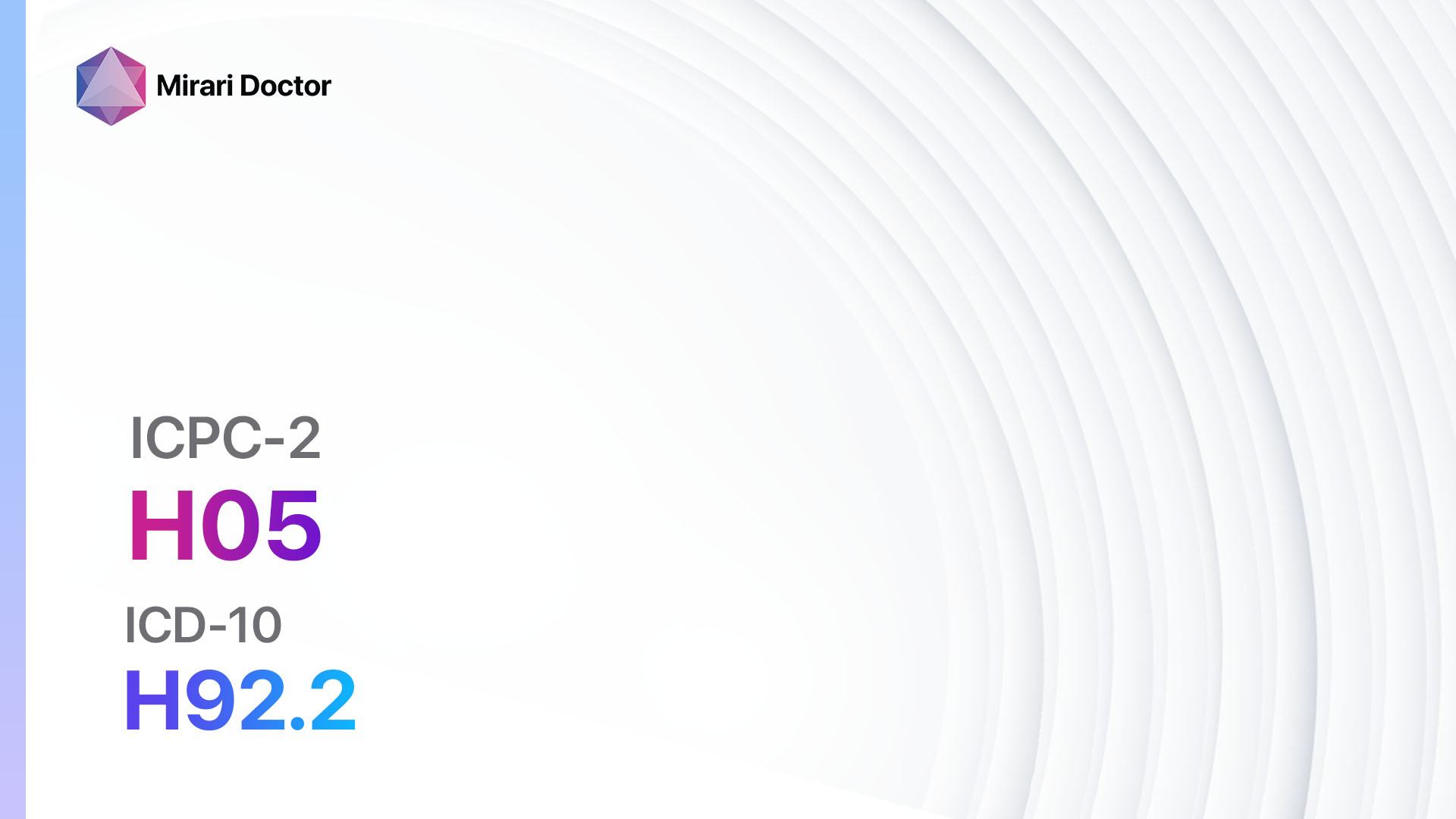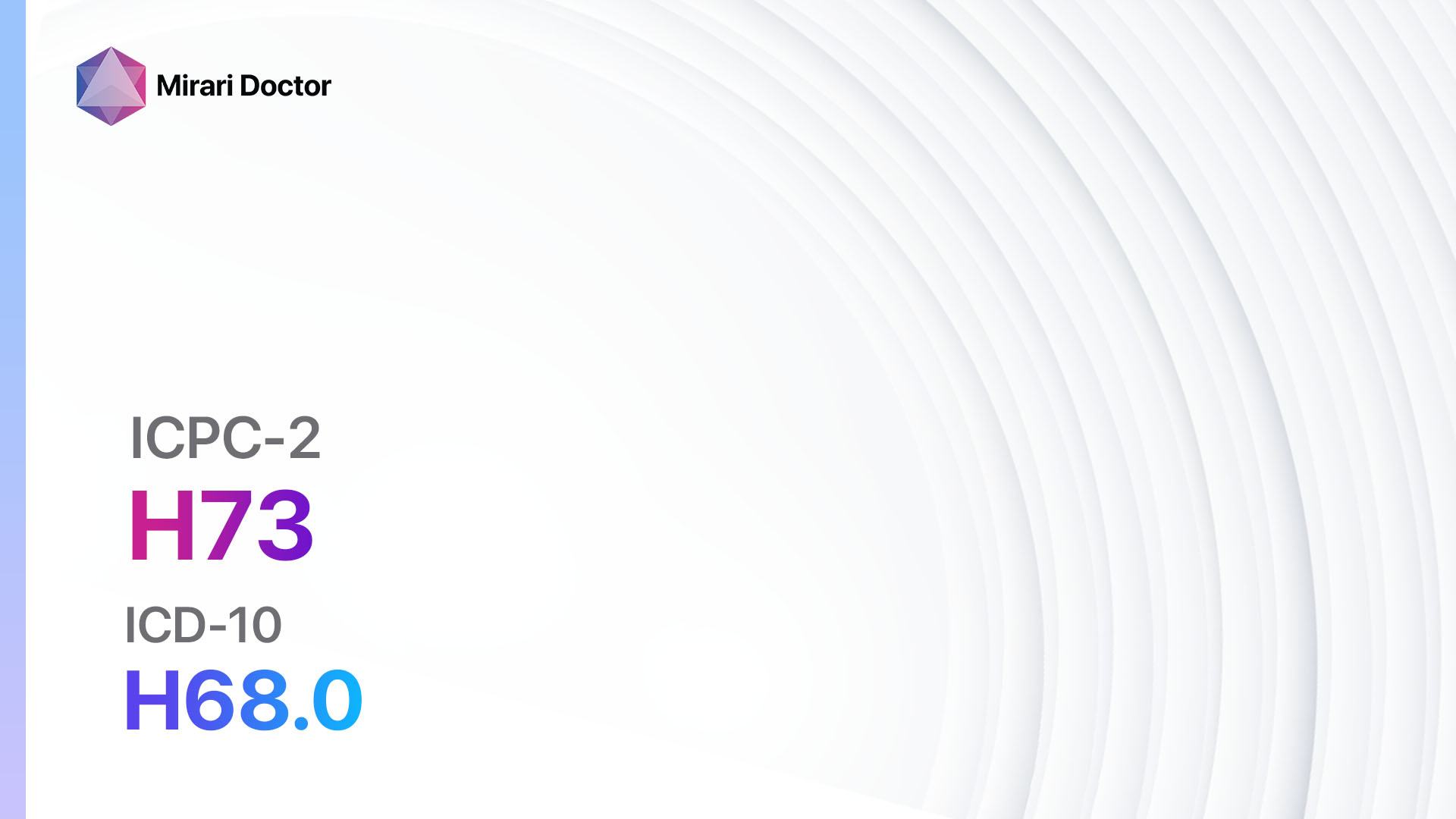
Introduction
Eustachian salpingitis is a condition characterized by inflammation of the Eustachian tube, which connects the middle ear to the back of the throat. This inflammation can lead to symptoms such as ear pain, hearing loss, and a feeling of fullness in the ear[1]. The aim of this guide is to provide healthcare professionals with a comprehensive overview of the diagnosis and management of Eustachian salpingitis.
Codes
Symptoms
- Ear pain: Patients may experience pain in one or both ears, which can range from mild to severe[4].
- Hearing loss: The inflammation of the Eustachian tube can cause a decrease in hearing ability[5].
- Feeling of fullness in the ear: Patients may feel as though their ears are blocked or plugged[6].
- Tinnitus: Some patients may experience ringing or buzzing sounds in the affected ear[7].
- Ear discharge: In some cases, there may be a discharge of fluid or pus from the ear[8].
Causes
- Upper respiratory tract infections: Eustachian salpingitis is commonly caused by viral or bacterial infections, such as the common cold or sinusitis[9].
- Allergies: Allergic reactions can cause inflammation of the Eustachian tube[10].
- Smoking: Smoking can irritate the Eustachian tube and lead to inflammation.
- Changes in air pressure: Rapid changes in air pressure, such as during air travel or scuba diving, can cause Eustachian tube dysfunction and subsequent inflammation.
Diagnostic Steps
Medical History
- Gather information about the patient’s symptoms, including the duration and severity of ear pain, hearing loss, and any associated symptoms.
- Ask about any recent upper respiratory tract infections, allergies, or exposure to smoke.
- Inquire about any recent changes in air pressure, such as air travel or scuba diving.
Physical Examination
- Inspect the external ear for any signs of inflammation or discharge.
- Perform otoscopy to examine the ear canal and eardrum for redness, swelling, or fluid accumulation.
- Assess the patient’s hearing ability using a tuning fork or audiometry.
Laboratory Tests
- There are no specific laboratory tests for diagnosing Eustachian salpingitis. However, blood tests may be performed to rule out other potential causes of ear pain and hearing loss, such as infection or autoimmune disorders.
Diagnostic Imaging
- Imaging modalities, such as X-rays, CT scans, or MRIs, are not typically necessary for diagnosing Eustachian salpingitis. However, they may be used to evaluate the extent of inflammation or to rule out other conditions, such as tumors or structural abnormalities.
Other Tests
- Tympanometry: This test measures the movement of the eardrum in response to changes in air pressure. It can help assess the function of the Eustachian tube.
- Audiometry: This test measures the patient’s hearing ability and can help determine the extent of hearing loss.
Follow-up and Patient Education
- Schedule a follow-up appointment to monitor the patient’s progress and adjust the treatment plan if necessary.
- Provide the patient with information about self-care measures, such as nasal decongestants, steam inhalation, and avoiding exposure to smoke or allergens.
- Educate the patient about the importance of completing any prescribed medications and attending follow-up appointments.
Possible Interventions
Traditional Interventions
Medications:
Top 5 drugs for Eustachian salpingitis:
- Antibiotics (e.g., Amoxicillin, Azithromycin, Ciprofloxacin):
- Cost: Generic versions can range from $3 to $50 for a course of treatment.
- Contraindications: Allergy to antibiotics, history of severe adverse reactions.
- Side effects: Nausea, diarrhea, rash.
- Severe side effects: Severe allergic reactions, tendon rupture.
- Drug interactions: Warfarin, oral contraceptives.
- Warning: Complete the full course of antibiotics as prescribed.
- Nasal decongestants (e.g., Oxymetazoline, Phenylephrine):
- Cost: Over-the-counter nasal decongestants range from $5 to $15.
- Contraindications: Severe hypertension, narrow-angle glaucoma.
- Side effects: Rebound congestion, nasal dryness.
- Severe side effects: Increased blood pressure, irregular heartbeat.
- Drug interactions: Monoamine oxidase inhibitors (MAOIs), beta-blockers.
- Warning: Limit use to 3-5 days to avoid rebound congestion.
- Steroid nasal sprays (e.g., Fluticasone, Budesonide):
- Cost: Generic versions range from $10 to $30 per bottle.
- Contraindications: Active nasal infection, recent nasal surgery.
- Side effects: Nasal irritation, nosebleeds.
- Severe side effects: Adrenal suppression, growth retardation in children.
- Drug interactions: None significant.
- Warning: Use as directed and avoid spraying directly onto the septum.
- Pain relievers (e.g., Acetaminophen, Ibuprofen):
- Cost: Over-the-counter pain relievers range from $5 to $15.
- Contraindications: Allergy to pain relievers, active peptic ulcer disease.
- Side effects: Upset stomach, liver toxicity (with excessive use of acetaminophen).
- Severe side effects: Severe allergic reactions, gastrointestinal bleeding.
- Drug interactions: Warfarin, aspirin.
- Warning: Follow recommended dosages and avoid long-term use.
- Antihistamines (e.g., Loratadine, Cetirizine):
- Cost: Generic versions range from $5 to $20 for a month’s supply.
- Contraindications: Allergy to antihistamines, narrow-angle glaucoma.
- Side effects: Drowsiness, dry mouth.
- Severe side effects: Severe allergic reactions, urinary retention.
- Drug interactions: Sedatives, alcohol.
- Warning: Some antihistamines can cause drowsiness, so caution should be exercised when driving or operating machinery.
Alternative Drugs:
- Mucolytics (e.g., Acetylcysteine): Help to thin mucus and improve drainage from the Eustachian tube.
- Oral decongestants (e.g., Pseudoephedrine): Can provide temporary relief of nasal congestion.
- Antifungal medications (e.g., Fluconazole): Used in cases of fungal Eustachian salpingitis.
- Corticosteroids (e.g., Prednisone): May be prescribed for severe or chronic cases of Eustachian salpingitis.
- Antiviral medications (e.g., Oseltamivir): Used in cases of viral Eustachian salpingitis.
Surgical Procedures:
- Myringotomy: A small incision is made in the eardrum to drain fluid or pus from the middle ear. Cost: $1,000 to $3,000.
- Tympanostomy tube placement: Small tubes are inserted into the eardrums to allow for drainage and equalization of pressure. Cost: $2,000 to $5,000.
Alternative Interventions
- Acupuncture: May help reduce inflammation and improve Eustachian tube function. Cost: $60 to $120 per session.
- Herbal remedies: Certain herbs, such as ginger and turmeric, have anti-inflammatory properties and may provide relief. Cost: Varies depending on the specific herb and preparation.
- Steam inhalation: Inhaling steam can help open up the Eustachian tube and relieve congestion. Cost: Free to $20 for a facial steamer.
- Nasal irrigation: Flushing the nasal passages with a saline solution can help remove mucus and improve Eustachian tube function. Cost: $10 to $20 for a nasal irrigation kit.
- Chiropractic adjustments: Some patients report improvement in Eustachian tube function after chiropractic adjustments. Cost: $50 to $150 per session.
Lifestyle Interventions
- Avoid exposure to smoke and other irritants.
- Practice good hygiene, such as frequent handwashing, to reduce the risk of upper respiratory tract infections.
- Use a humidifier to add moisture to the air and prevent dryness in the nasal passages.
- Avoid activities that involve rapid changes in air pressure, such as scuba diving or flying.
- Manage allergies effectively by avoiding triggers and taking antihistamines as prescribed.
It is important to note that the cost ranges provided are approximate and may vary depending on the location and availability of the interventions.
Mirari Cold Plasma Alternative Intervention
Understanding Mirari Cold Plasma
- Safe and Non-Invasive Treatment: Mirari Cold Plasma is a safe and non-invasive treatment option for various skin conditions. It does not require incisions, minimizing the risk of scarring, bleeding, or tissue damage.
- Efficient Extraction of Foreign Bodies: Mirari Cold Plasma facilitates the removal of foreign bodies from the skin by degrading and dissociating organic matter, allowing easier access and extraction.
- Pain Reduction and Comfort: Mirari Cold Plasma has a local analgesic effect, providing pain relief during the treatment, making it more comfortable for the patient.
- Reduced Risk of Infection: Mirari Cold Plasma has antimicrobial properties, effectively killing bacteria and reducing the risk of infection.
- Accelerated Healing and Minimal Scarring: Mirari Cold Plasma stimulates wound healing and tissue regeneration, reducing healing time and minimizing the formation of scars.
Mirari Cold Plasma Prescription
Video instructions for using Mirari Cold Plasma Device – H73 Eustachian salpingitis (ICD-10:H68.0)
| Mild | Moderate | Severe |
| Mode setting: 1 (Infection) Location: 0 (Localized) Morning: 15 minutes, Evening: 15 minutes |
Mode setting: 1 (Infection) Location: 0 (Localized) Morning: 30 minutes, Lunch: 30 minutes, Evening: 30 minutes |
Mode setting: 1 (Infection) Location: 0 (Localized) Morning: 30 minutes, Lunch: 30 minutes, Evening: 30 minutes |
| Mode setting: 2 (Wound Healing) Location: 0 (Localized) Morning: 15 minutes, Evening: 15 minutes |
Mode setting: 2 (Wound Healing) Location: 0 (Localized) Morning: 30 minutes, Lunch: 30 minutes, Evening: 30 minutes |
Mode setting: 2 (Wound Healing) Location: 0 (Localized) Morning: 30 minutes, Lunch: 30 minutes, Evening: 30 minutes |
| Mode setting: 3 (Antiviral Therapy) Location: 0 (Localized) Morning: 15 minutes, Evening: 15 minutes |
Mode setting: 3 (Antiviral Therapy) Location: 0 (Localized) Morning: 30 minutes, Lunch: 30 minutes, Evening: 30 minutes |
Mode setting: 3 (Antiviral Therapy) Location: 0 (Localized) Morning: 30 minutes, Lunch: 30 minutes, Evening: 30 minutes |
| Total Morning: 45 minutes approx. $7.50 USD, Evening: 45 minutes approx. $7.50 USD |
Total Morning: 90 minutes approx. $15 USD, Lunch: 90 minutes approx. $15 USD, Evening: 90 minutes approx. $15 USD, |
Total Morning: 90 minutes approx. $15 USD, Lunch: 90 minutes approx. $15 USD, Evening: 90 minutes approx. $15 USD, |
| Usual treatment for 7-60 days approx. $105 USD – $900 USD | Usual treatment for 6-8 weeks approx. $1,890 USD – $2,520 USD |
Usual treatment for 3-6 months approx. $4,050 USD – $8,100 USD
|
 |
|
Use the Mirari Cold Plasma device to treat Eustachian salpingitis effectively.
WARNING: MIRARI COLD PLASMA IS DESIGNED FOR THE HUMAN BODY WITHOUT ANY ARTIFICIAL OR THIRD PARTY PRODUCTS. USE OF OTHER PRODUCTS IN COMBINATION WITH MIRARI COLD PLASMA MAY CAUSE UNPREDICTABLE EFFECTS, HARM OR INJURY. PLEASE CONSULT A MEDICAL PROFESSIONAL BEFORE COMBINING ANY OTHER PRODUCTS WITH USE OF MIRARI.
Step 1: Cleanse the Skin
- Start by cleaning the affected area of the skin with a gentle cleanser or mild soap and water. Gently pat the area dry with a clean towel.
Step 2: Prepare the Mirari Cold Plasma device
- Ensure that the Mirari Cold Plasma device is fully charged or has fresh batteries as per the manufacturer’s instructions. Make sure the device is clean and in good working condition.
- Switch on the Mirari device using the power button or by following the specific instructions provided with the device.
- Some Mirari devices may have adjustable settings for intensity or treatment duration. Follow the manufacturer’s instructions to select the appropriate settings based on your needs and the recommended guidelines.
Step 3: Apply the Device
- Place the Mirari device in direct contact with the affected area of the skin. Gently glide or hold the device over the skin surface, ensuring even coverage of the area experiencing.
- Slowly move the Mirari device in a circular motion or follow a specific pattern as indicated in the user manual. This helps ensure thorough treatment coverage.
Step 4: Monitor and Assess:
- Keep track of your progress and evaluate the effectiveness of the Mirari device in managing your Eustachian salpingitis. If you have any concerns or notice any adverse reactions, consult with your health care professional.
Note
This guide is for informational purposes only and should not replace the advice of a medical professional. Always consult with your healthcare provider or a qualified medical professional for personal advice, diagnosis, or treatment. Do not solely rely on the information presented here for decisions about your health. Use of this information is at your own risk. The authors of this guide, nor any associated entities or platforms, are not responsible for any potential adverse effects or outcomes based on the content.
Mirari Cold Plasma System Disclaimer
- Purpose: The Mirari Cold Plasma System is a Class 2 medical device designed for use by trained healthcare professionals. It is registered for use in Thailand and Vietnam. It is not intended for use outside of these locations.
- Informational Use: The content and information provided with the device are for educational and informational purposes only. They are not a substitute for professional medical advice or care.
- Variable Outcomes: While the device is approved for specific uses, individual outcomes can differ. We do not assert or guarantee specific medical outcomes.
- Consultation: Prior to utilizing the device or making decisions based on its content, it is essential to consult with a Certified Mirari Tele-Therapist and your medical healthcare provider regarding specific protocols.
- Liability: By using this device, users are acknowledging and accepting all potential risks. Neither the manufacturer nor the distributor will be held accountable for any adverse reactions, injuries, or damages stemming from its use.
- Geographical Availability: This device has received approval for designated purposes by the Thai and Vietnam FDA. As of now, outside of Thailand and Vietnam, the Mirari Cold Plasma System is not available for purchase or use.
References
- Smith ME, Tysome JR. Tests of Eustachian tube function: a review. Clin Otolaryngol. 2015;40(4):300-311. doi:10.1111/coa.12428
- World Organization of Family Doctors (WONCA). International Classification of Primary Care, Second edition (ICPC-2). Oxford University Press; 1998.
- World Health Organization. International Statistical Classification of Diseases and Related Health Problems 10th Revision (ICD-10). World Health Organization; 2019.
- Schilder AG, Bhutta MF, Butler CC, et al. Eustachian tube dysfunction: consensus statement on definition, types, clinical presentation and diagnosis. Clin Otolaryngol. 2015;40(5):407-411. doi:10.1111/coa.12475
- Bluestone CD. Eustachian Tube: Structure, Function, Role in Otitis Media. Hamilton, Ontario: BC Decker; 2005.
- Llewellyn A, Norman G, Harden M, et al. Interventions for adult Eustachian tube dysfunction: a systematic review. Health Technol Assess. 2014;18(46):1-180, v-vi. doi:10.3310/hta18460
- McCoul ED, Anand VK, Christos PJ. Validating the clinical assessment of eustachian tube dysfunction: The Eustachian Tube Dysfunction Questionnaire (ETDQ-7). Laryngoscope. 2012;122(5):1137-1141. doi:10.1002/lary.23223
- Alper CM, Swarts JD, Singla A, Banks J, Doyle WJ. Relationship between the electromyographic activity of the paratubal muscles and eustachian tube opening assessed by sonotubometry and videoendoscopy. Arch Otolaryngol Head Neck Surg. 2012;138(8):741-746. doi:10.1001/archoto.2012.1293
- Buchman CA, Doyle WJ, Skoner D, et al. Influenza A virus-induced acute otitis media. J Infect Dis. 1995;172(5):1348-1351. doi:10.1093/infdis/172.5.1348
- Skoner DP, Doyle WJ, Chamovitz AH, Fireman P. Eustachian tube obstruction after intranasal challenge with house dust mite. Arch Otolaryngol Head Neck Surg. 1986;112(8):840-842. doi:10.1001/archotol.1986.03780080042009
Related articles
Made in USA


